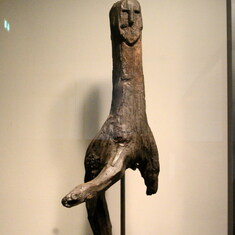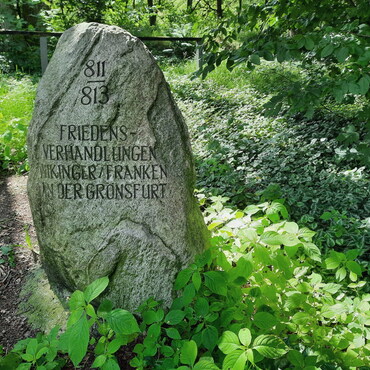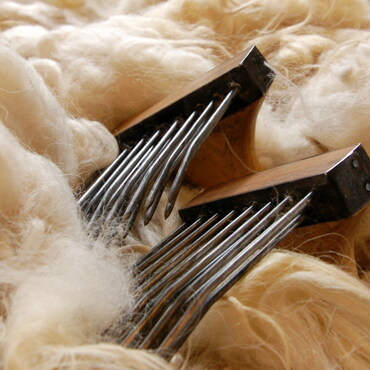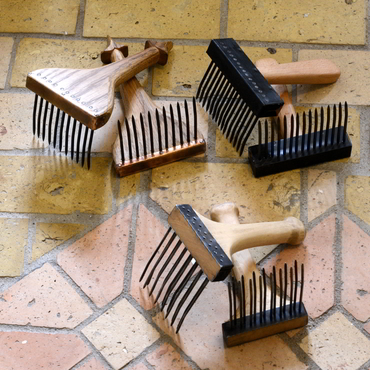"Each of them prostrates himself before the great idol, saying to it: - Oh my Lord, I have come from a far country and I have with me such and such a number of young slave girls, and such and such a number of sable skins... - and so on, until he has listed all the trade goods he has brought. [Then he adds:] - I have brought you this gift - Then he leaves with what he has with him in front of the wooden post [and says:] - I would like you to do the favour of sending me a merchant who has large quantities of dinars and dirhams and who will buy everything that I want and not argue with me over my price. - Then he departs.
If he has difficulty selling and his stay becomes long drawn out, he returns with another present a second and even a third time. If he cannot get what he wants, he brings a present for each of the little idols and asks them to intercede, saying: - These are the wives of our Lord and his daughters and sons. - Thus he continues to make his request to each idol in turn, begging their intercession and abasing himself before them." 1
Wooden Idols - the archaeology
The Rus' custom of sacrificing to wooden idols, as described above by Ibn Fadlan, has been a common practice throughout the geographical regions influenced by the Vikings. In his report, he further describes how they later sacrifice animals to the idols in gratitude and put the animals' heads on the long wooden stakes. A similar custom is described by Ibrahim Ibn Ya'qub when he travelled to Hedeby/Schleswig in 965: "They gather together for a religious festival to honour the gods, at which they eat and drink. Those that intend to sacrifice an animal set up a pole in front of their house from which they suspend a piece of the animal whose sacrifice they are offering [...]. In this way everyone can see how they plan to honour the gods."1 Three small wooden figurines from Hedeby harbour and two from the settlement have been found during excavations. They have been interpreted as toys but might as well be small idols, similar to those found in Novgorod 2 .
Two faint post holes in the cult house at Tissø-Fuglegård 3, dated between 850 and 950, have been interpreted as traces of two wooden idols. The wood itself is not preserved so we don't know whether the interpretation is correct and if so, which deities were depicted, but the similarity to the three idols depicting Thor, Wodan (Odin) and Fricco (Frigg), described by Adam of Bremen in 1075 at the temple at Gamla Uppsala, is striking 3 .
Wooden idols are not an invention of the Viking Age but part of a long lasting heathen tradition. In the 1960's, excavators unearthed an old sacrificial place dated by pottery to around 200-150 BC (radio-carbon dating of the wood: 180 BC to 70 AD 5 ) in a former bog at Forlev Nymølle, close to Skanderborg in Denmark 4 . Among many animal bones and a great amount of white stones they found a wooden figure of 2.74m in length made of a young oak. The tree had been chopped with an axe on both sides and turned upside down so the two branches would form the legs. A small cut between the branches marks the female sex and both sides of the "legs" had been worked to form rounded hips, which is why the figure has been interpreted as a female idol. In 1946, another bog find in Rebild Skovhuse south of Ålborg, yielded a 1.05m long wooden female idol which has been radio-carbon dated to the Late Bronze Age 5 . The tree's original shape had not been changed much. A bulb close to where the roots would have been marks the shape of the hips. The head and neck are carved out, the eyes are formed by two dots and the cheeks were slightly flattened, but breast and back are formed by the tree's own shape, only slightly emphasized. The female sex is marked by a few cuts at the groin. Four horizontal cuts at the belly look like deep wrinkles - maybe stretch marks from pregnancy?
Another small (42cm), male idol dated to between 400 and 800 AD had been found in the 1880's in a bog at Rude Eskildstrup, Denmark 6 . Also found in the 1880's was a phallic anthropomorphic figurine made of oak close to Broddenbjerg which has been dated to the beginning of the Late Bronze Age 5 . It is made of a piece of branch, with two branches forming the legs and a third forming a very long erect penis. The face, with eyebrows, nose and beard, is the only clearly formed feature. One "leg" had been chopped off while the other one has been sharpened so it might have been stuck into the bog or lake. Some resin has been detected ca. 11cm around the base of the phallus.
From Aukamper Moor close to Braak in Holstein come two wooden idols of around 3m length depicting a man and a woman 5 . The woman is somewhat smaller than the man, reaching up to his shoulders. They too were made of oak. As with several other idols mentioned above, they don't have any arms, but the sex of the respective figures are made very clear, since the man has a penis and the woman a vulva and breasts. The faces are worked out in a simple manner, but still give them distinct features. The woman's face is somewhat rounder and the nose flatter. She has been radio-carbon dated to around 405-261 BC (Pre-Roman Iron Age), while the man has been radio-carbon dated to around 399-207 BC (also Pre-Roman Iron Age).
Modern adaptations
While we were in Trelleborg and Moesgård this year (2018), Loki's Freemen raised wooden idols similar to those from Forlev Nymølle and the Aukamper Moor (in Moesgård, we even participated in this project). Recreating those figures and seeing them standing, towering above oneself, makes one wonder what the people in earlier times saw in them. Were they "only" depictions of common deities, symbols of a widespread religion? If a traveler came by, would he or she have seen the same God or Goddess in the wooden faces as the people living there? Or was it something much more personal, were the idols part of the local community, were they integrated in local feasts not only to ask them a favour, but also because to some they were like old friends?
We will never know for certain. But one thing is clear: there is something magical about them. Even the most skeptical person probably can't resist looking them into the face. Visitors at Moesgård beach clearly were intrigued by them. And the Vikings of the Moesgård Vikingetræf promptly breathed life into them: They were given a marriage, they were decorated with ribbons, pearls, been given flowers and fruits. During the lunar eclipse, a ritual took place. And when the festival ended - the idols still standing high - some came to say goodbye and wondered how long they would be standing until sea and storm would claim them for their own.
Building them was not the work of one person, but that of a community, of a group of friends. People came together for them. There wasn't much talk, not much discussion, since everybody knew what to do. It was a communal project and that sense of community, of working together and staying even after it was too dark to see what knife and axe were doing, became part of the soul of these wooden figures. This isn't something one can see by studying bog finds of ages gone by. This is a part of our history that has to be lived in order to try to understand it.
Literature
- Faḍlān, Aḥmad Ibn. "Ibn Fadlan and the land of Darkness: Arab travellers in the Far North". Penguin UK, 2012.
- Westphal, Florian. Die Holzfunde von Haithabu. Wachholtz, 2007.
- Wamers, Egon (Hrsg.), "Odin, Thor and Freyja - Skandinavische Kultplätze des 1. Jahrtausends n. Chr. und das Frankenreich", Archäologisches Museum Fankfurt, 2017.
- Gudinden ved Forlev Nymølle, http://www.skanderborgleksikon.dk/index.php/Gudinden_ved_Forlev_Nym%C3%B8lle, August 2018
- Ebbesen, Klaus, "En gudindestatue fra bronzealderen - fundet i Rebild", Fra Himmerland og Kjær Herred, 2011, pp. 33-42
- Træmanden fra Rude Eskilstrup, https://natmus.dk/historisk-viden/danmark/oldtid-indtil-aar-1050/yngre-jernalder-400-800/guder-i-jernalderen/traemanden-fra-rude-eskildstrup/, August 2018
